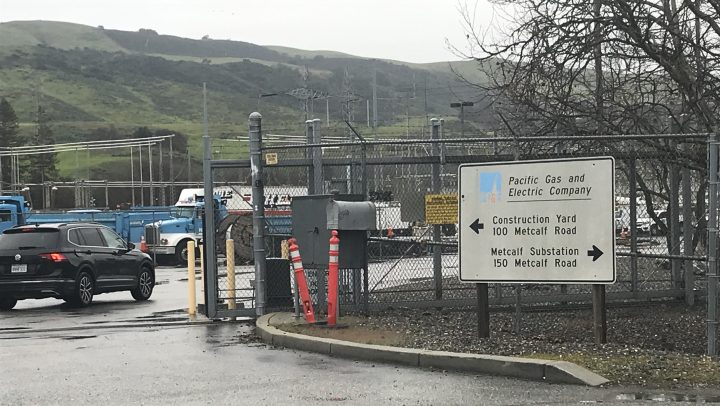
Are utility companies — and the government — ready for the next attack on the grid?
Are utility companies — and the government — ready for the next attack on the grid?

On Friday, the Federal Energy Regulatory Commission was set to receive a review of security standards for the nation’s sprawling electrical transmission system. The FERC commissioned the study after a recent series of physical attacks on electrical substations across the country.
These substations are a key stopover for electricity as it heads from power plants to your home or business.

Gunfire damage at two North Carolina substations in December left 45,000 people without power for up to five days. Some of the recent attacks have similarities to an incident in California that occurred 10 years ago.
The Metcalf Transmission Substation, owned by Pacific Gas & Electric Co., is nestled along a stretch of green, rolling hills near San Jose. Horses often graze off a country road close to the facility’s entrance.
Down the road, driving on the ranch where he and his wife operate a corporate event space, Steve Nilmeyer said he remembers what happened during the wee hours of April 16, 2013.
“We just heard a bunch of gunshots. It was like, pop, pop, pop, pop, pop — over and over and over again,” he said.

At around 1 a.m., over a 20-minute period, snipers took down 17 transformers at the substation. The assault caused an estimated $15 million in damage.
Given Metcalf’s location, the damage could have cut power to Silicon Valley, the country’s technology hub. Cell service did go down, but officials rerouted the flow of electricity and were able to prevent a major blackout.
Nilmeyer’s wife, Michelle Lybbert-Nilmeyer, said details of the attack remained murky for months. Law enforcement investigated and asked the couple questions.
“It was very, very hush-hush,” she said. “They didn’t really tell you what was going on or what happened. You didn’t know if it was an accident or intentional. So you never really got a lot of information — never did.”
Indications that the attack may have been the result of a “military-style” plot only became public some eight months later.
A decade on, the substation is fortified with walls and cameras. But no one has been arrested for what happened there.


Evidence from recent plots against electrical substations suggests that some attackers have studied past incidents like Metcalf.
Tom Popik is chair of the Foundation for Resilient Societies, which promotes best practices for protecting the grid and other critical infrastructure. He said this kind of equipment is a bigger target now.
“We have extremist groups that understand how to attack the electric grid, how to attack substations,” he said.
That knowledge is the reason industry players are reluctant to reveal much about those attacks, fearing copycat strikes.
PG&E said it has spent $300 million to protect substations since the 2013 attack. It deflected Marketplace’s questions about ongoing security concerns, saying “We aren’t going to provide a road map for anyone.”
The public is in the dark because of this caution, Popik said. “Keeping the vulnerability of the electric grid secret is a short-term strategy. It might work for a few years, but it’s not going to work in the long term.”
Popik argues that Metcalf was supposed to be a wakeup call. And it did prompt reforms.
FERC, the federal regulator, declined a request for an on-the-record interview with Marketplace but shared the safety standards that were adopted after the 2013 incident.
They aimed to protect against risks to the most critical transmission infrastructure. But it’s unclear how much utility companies beyond PG&E have spent on substation security since the new standards took effect.
Those standards — now under FERC review — are not working, said Mike Mabee of the website Grid Security Now!
“After the physical security standard was put into place, we still continue to have these attacks. So the physical security standard has not been effective,” he said.
Mabee, who has researched physical attacks on the electric grid for years, estimates there have been about 1,000 such incidents since 2010.
They range from vandalism to elaborate operations like Metcalf. They can be costly to repair, but Mabee said money is not the biggest concern.
“The veneer of civilization is really, really thin and very, very fragile,” he said. “If we lose all of our critical infrastructures because our electric grid goes down for a long period of time, people aren’t necessarily going to behave the way we would want them to.”
The human cost of a prolonged outage could be catastrophic. Mabee said we — and the country’s emergency management system — aren’t ready.
There’s a lot happening in the world. Through it all, Marketplace is here for you.
You rely on Marketplace to break down the world’s events and tell you how it affects you in a fact-based, approachable way. We rely on your financial support to keep making that possible.
Your donation today powers the independent journalism that you rely on. For just $5/month, you can help sustain Marketplace so we can keep reporting on the things that matter to you.











